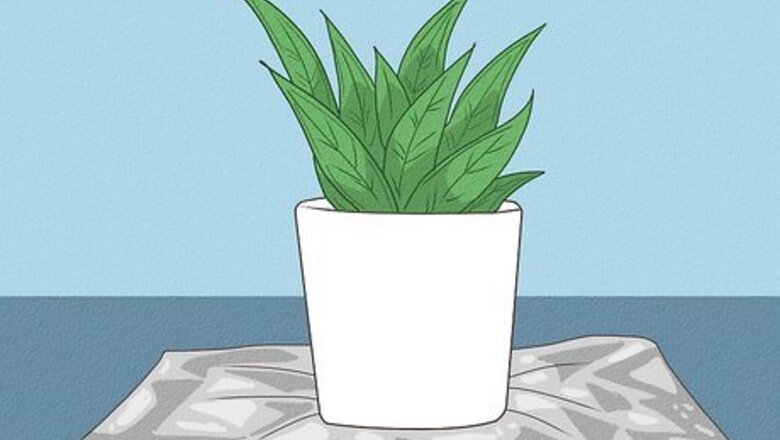
views
X
Research source
Small Animal Toxicology. Osweiler. Publisher: Blackwell.
[2]
X
Research source
But even if the plant is safe for the cat, your pet's behavior can damage or kill your plants! Luckily, there are steps you can take to minimize the damage.
Preventing Behavior that Damages Plants
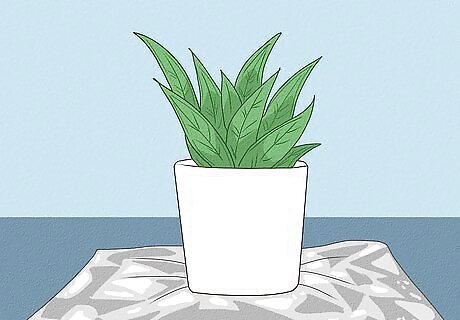
Surround the plant with an unpleasant surface. Put tin foil down around the plant, or a plastic carpet protector with the knobby side up. Your cat may not be willing to walk across an unpleasant surface to get to your plants.
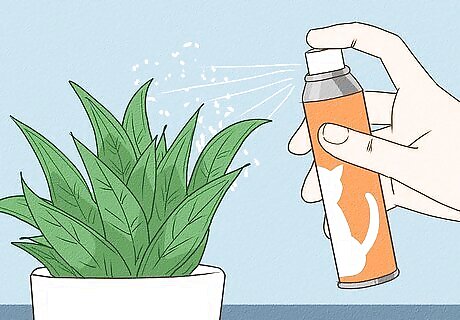
Spritz deterrent spray on your plants. You can find deterrent sprays in the pet store that won't harm your plant, but will discourage your cat from poking around it. A good example of a safe product is “Get Off,” but always make sure to check the label before buying a deterrent product. Some of these sprays might actually hurt your plant. You can make your own deterrent spray at home, as well. Make a mixture of one part vinegar to three parts water, and spritz it onto the leaves of your plant. Cats hate the smell, and it doesn't hurt your plant!
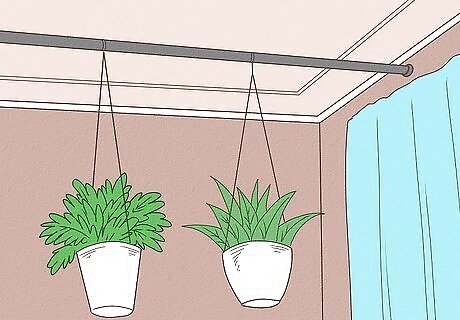
Hang your plants from the ceiling. You can purchase hanging pots and hooks from any home and garden store. Hanging plants are both attractive and cat-proof!
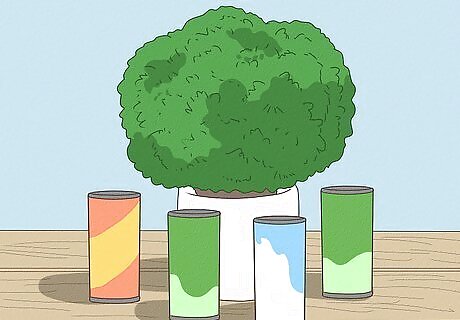
Use noise to deter your cat. Collect and wash out empty cans — whether for canned vegetables or soft drinks. Line them up along the edge of the table where you keep your plants, then add more rows on top to form a wall. When your cat jumps up and knocks them down, the noisy clamor will send him flying. He'll think twice about approaching your plants after enough scares.
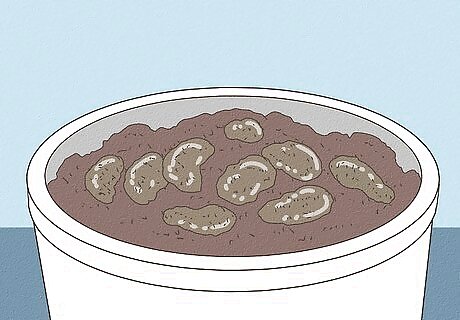
Sprinkle products with lion dung into the plant's soil. This might sound quirky, but products like Silent Roar contain lion feces. Though you won't be able to smell it, your cat will, and he'll get the message that a powerful stranger has already claimed the plant as part of his territory.

Train your cat to leave plants alone. This is best done with "remote punishment." The idea is to make the cat associate approaching the plant with something bad, like getting sprayed in the face with water. However, you don't want the cat to associate the punishment with you. You want your cat to think the punishment came out of nowhere. Booby trap the plant by using putting a can of compressed air that's activated by a motion sensor near it. These pet-training aids can be purchased in pet stores or online. When your cat approaches plant, he'll get a blast of compressed air. This doesn't hurt him, but it'll make him think twice about approaching the plant again.
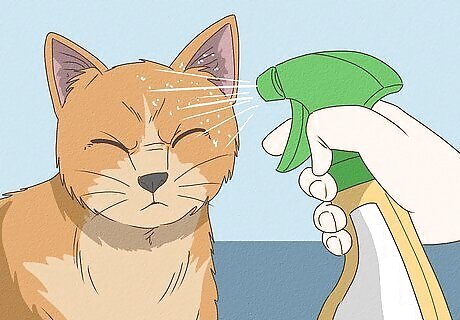
Don’t punish the cat yourself. For example, if you spray the cat with water or shout at him, your cat will associate the punishment with you. He may well stop eating the plant when you're around, but he'll probably keep doing what he wants when you're out of the room. Punishing the cat yourself actually makes him more devious. He also might grow a little frightened of you, which isn't the relationship you want with your pet.
Providing Your Cat with Alternatives to Play With
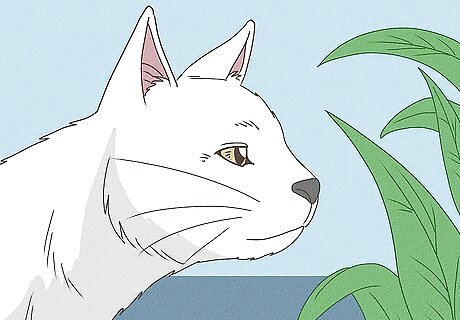
Understand the possible reasons behind plant-damaging behavior. Your cat might just be bored to tears cooped up in your house. If moving leaves are the closest thing to toys or prey in his environment, it should be no surprise when your cat is drawn to them. To best curb plant-damaging behavior, you need to provide your cat with healthier alternatives. Your cat may be curious about a plant's scent, which leads them to taste it. A plant may look like an enticing game of prey play while moving in the breeze of an air conditioner.

Have regular play-sessions with your cat. Some breeds of cat are far more active than others, so you'll be the best judge of how much play your cat needs. As a general rule, though, it's best to play with your cat at least twice a day for 5-10 minutes each time.
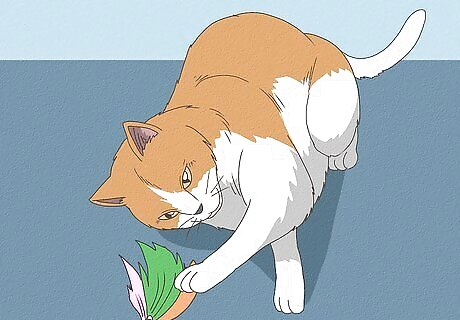
Use toys that will get your cat moving. Although your cat will love the attention either way, don't let your play sessions turn into cuddle sessions. You need to get your cat excited and winded to prevent him from chomping on your plants. Use toys that are on the end of a long string, so you can make your cat run from one end of the room to the other without exhausting yourself. Food puzzles and mazes are other great forms of mental stimulation for your cat.
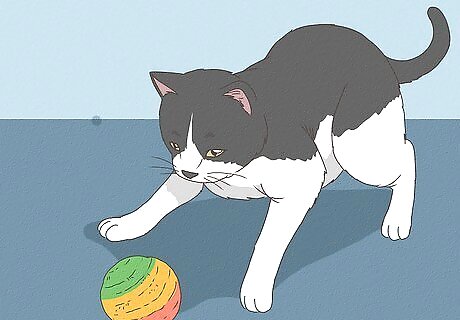
Leave toys out for him while you're gone. Your cat might get especially bored when there's nobody around to keep him company. Leaving toys out for him when he's alone gives him more constructive outlets for his boredom than plant-chewing. Rotate the toys out so he doesn't get bored with the same ones day after day. Your cat will ignore a toy he's become too familiar with. However, if it reappears after a long absence, he'll be excited about it again. Provide extra entertainment by hanging up bird feeders in front of viewing windows.
Choosing Your Plants
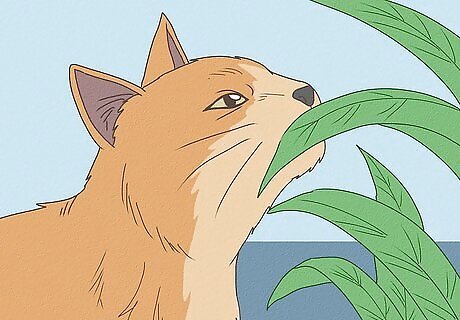
Observe your cat's preferences. Pay attention to what kinds of plants draw his attention, then avoid plants like that in the future. For example, your cat might love wispy, dangling leaves that flutter in the breeze. In that case, buy plants with large, heavy leaves that don't look as much fun to play with.

Avoid buying “cat magnet” plants. Yucca plants, for example, seem to be particularly irresistible, and your cat will chew on them without mercy. Zinnias and marigolds are other examples of "cat magnet" plants that you should avoid. If you already have an irresistible plant in your home, keep on a high shelf where the cat can't reach it. Make sure it's an unreachable shelf, or your nimble cat might just leap up there.
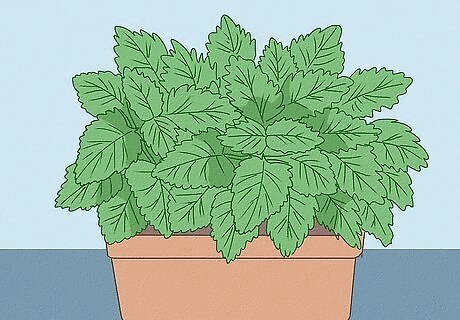
Place "bait" plants around your home. You can use your cat's attraction to certain species of plants to your benefit. Place trays of catnip or grass around your home for your cat. Munching on these plants will help satisfy his need to chew, and hopefully distract him from your more prized plants.
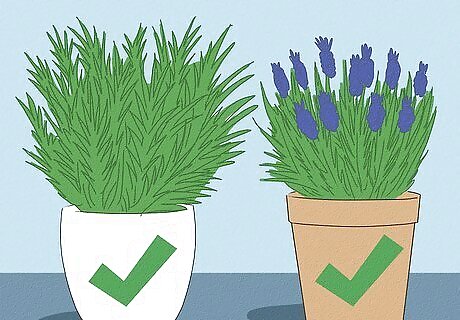
Buy plants your cat dislikes. There are also some plant species that cats just can't seem to stomach. They often have a strong smell, like lavender, rosemary, or citrus plants. While you can enjoy the pleasant aroma of these plants, the smell will discourage your cat from chomping on them. You might also buy plants that have very high leaves that cats can’t reach, such as small trees.




















Comments
0 comment